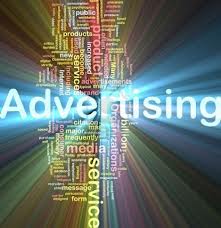| THE BRIEF Archives | The BRIEF, December 2012
| The BRIEF, November 2012
| The BRIEF, October 2012
| The BRIEF, September 2012
| The BRIEF, August 2012
| The BRIEF, July 2012
| The BRIEF, June 2012
| The BRIEF, May 2012
| The BRIEF, April 2012
| The BRIEF, March 2012
| The BRIEF, February 2012
| The BRIEF, October 2011
| The BRIEF, September 2011
|
|
|
|
|  |
 |
 |
|
Accredited Business News
|
BBB Study Shows Radical Change In Advertising In Cyber Age
Humorous and risque advertising rank low among consumers. Cyberspace is changing the advertising scene radically, both in terms of where consumers look for ads and what businesses say is their most effective advertising medium, according to a Better Business Bureau study. Cyberspace is changing the advertising scene radically, both in terms of where consumers look for ads and what businesses say is their most effective advertising medium, according to a Better Business Bureau study.
The study, “Believe It or Not: A BBB Study of the Perceptions of Advertising by Consumers and Business,” is based largely on surveys of 1,360 consumers and 442 businesses.
Consumers were asked what the most and least trusted media were for advertising. The two results were combined to create a “trust factor.” With a rating of a positive 17 percent, they ranked company websites well ahead of such common media as mainline newspapers, television and radio.
Businesses were asked to indicate their most effective medium for advertising. A third of respondents said their own websites were the most effective, and company websites led the list of where businesses spend their most advertising dollars.
Businesses also ranked search engine optimization (SEO) high in both dollars spent and effectiveness. The study recommends “that businesses that have not done so explore the opportunities available through search engine optimization and search engine marketing.”
Eighty-five percent of consumers responding to the survey said they use an Internet search engine to find a company with which to do business, according to the study.
The surveys revealed a major disconnect between consumers and businesses as to whether consumers believe advertising. While only 14 percent of consumers said they believe advertising “most of the time,” nearly half of the businesses said they feel consumers believe advertising most of the time.
"And conversely, while a fourth of consumers said they usually don’t believe advertising, businesses thought only five percent of consumers felt that way,” the study notes.
The surveys also revealed what consumers like and don’t like in ads, and in some cases there were large differences between consumers and businesses.
“While only a third of consumers thought testimonials were positive, 80 percent of businesses thought they were,” the study states. “Nearly two-thirds of businesses thought ads that were repeated several times were positive, but only 19 percent of consumers thought so.”
Elements in an advertisement that rank low among consumers are a company’s contact email address and humorous advertising. Both consumers and businesses agreed that slightly risqué advertising such as women in bikinis is negative, with nearly two-thirds of consumers expressing strong disapproval.
Nearly all agreed that an ad must not violate laws, and more than 90 percent of consumers and businesses think an ad must comply with BBB standards for advertising, the group of positive and negative advertising practices drawn up by industry representatives.
The study also looked at the question of who’s responsible for misleading or untruthful advertising. While noting that the BBB considers that the responsibility for truthful and non-deceptive advertising rests with the advertiser, the study said, “Some would suggest that the mantle of responsibility is far-reaching, and that media in which advertising appears also have a responsibility for legal and ethical advertising.”
“The Federal Trade Commission (FTC) has repeatedly urged the media to be on the lookout for misleading advertising,” the study notes, and quotes the FTC’s simple formula for avoiding misleading advertising: “One evaluation standard applies to all ads: Does the offer, promotion, payoff, or benefit sound too good to be true? If you use this standard, and if you exercise caution when you spot some of the buzz words and techniques . . . there’s a good chance that you’ll be able to spot a questionable ad or promotion with just a quick look, and an even better chance that you’ll be able to stop it before it gets into print, on the air, or in the mail to your customers.”
However, the study points out, the Newspaper Association of America (NAA) disclaimed any responsibility for policing ads, telling the FTC at a 2002 workshop: “NAA believes that advertisers are ultimately responsible for the content of their advertising, and further, that the FTC and other government authorities are responsible for enforcing advertising laws.”
Among the recommendations the study makes is that media be more diligent in screening advertising for public distribution. The study also recommended that consumers continue to be alert for any misleading advertising, noting the many red flags, such as use of the word free, asterisks which may nullify the offer, large savings claims, lowest price guarantees, etc.
The study may be viewed at http://stlouis.bbb.org/Storage/142/Documents/ADStudy.pdf
|
| [PRINTER FRIENDLY VERSION]
|
|
THE BRIEF is issued by Better Business Bureau to its accredited businesses, their employees and subscribers monthly. Reference to or mention of any company, product or service is not to be interpreted, per se, as statements derogatory of such company, product or service, but as information from sources believed to be reliable, for the confidential use of the aforementioned accredited businesses, their employees and subscribers.
(SOME CONTENTS MAY BE REPRODUCED WITH PERMISSION AND ATTRIBUTION)
| |
![]()
![]()